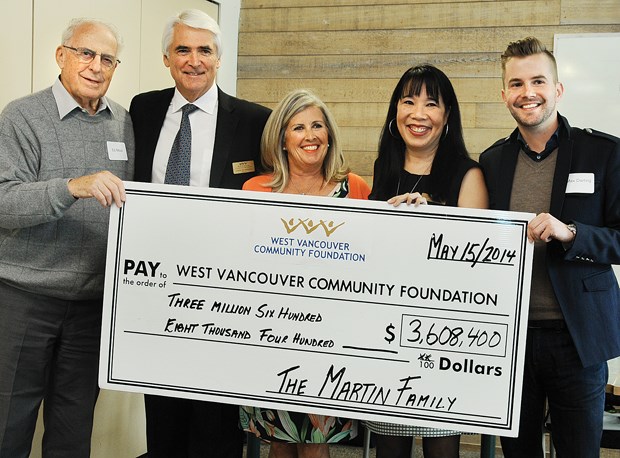The West Vancouver Community Foundation is on the receiving end of the largest donation in the nonprofit's history.
The foundation, along with the Salvation Army, University of British Columbia and the Central City Foundation will share in a $27-million endowment from the estate of Howard Martin, a West Vancouver developer who died in 1994.
The West Vancouver portion is $3.6 million.
"Basically, it's a turning point for the foundation," said Gerry Humphries, board chairman. It's the largest single bequest we've received in the 35-year history of the foundation."
With the donation, the foundation will have $9.1 million in the bank, generating interest for grants offered to groups and individuals working in the fields of environment, arts and culture, educational pursuits and the health of seniors and youth.
"It enables us to meet more of the demand," Humphries said. "Every year we can only meet a certain fraction of that so given the additional revenue, this will allow for grant giving - either more organizations or bigger amounts for different organizations. It really does ramp up the amount of money we can put back into the community."
Some of the groups the foundation regularly supports include the West Vancouver
Streamkeepers Society, the Harmony Arts Festival and the Ambleside Youth Centre.
The donation has the added benefit of raising the profile of the foundation, Humphries added.
"Hopefully it will put us in the eye of people who don't know much about us," he said. "We're just extremely grateful to Mr. Martin and his family for making this possible. It's a huge point for us."
Martin's will stipulated the money be donated to the groups 20 years after his death though his giving to West Vancouver started much earlier. In 1954, he donated 10 acres of this land to establish Caulfeild elementary with the condition that the eastern end of the property should be kept as forest, because he believed that children should have direct contact with nature, according to a press release.
Martin built homes around the school during the 1960s and 1970s, and was instrumental in bringing together the various owners in a process that led to the 1978 approval of the development of the Caulfeild neighbourhood.



